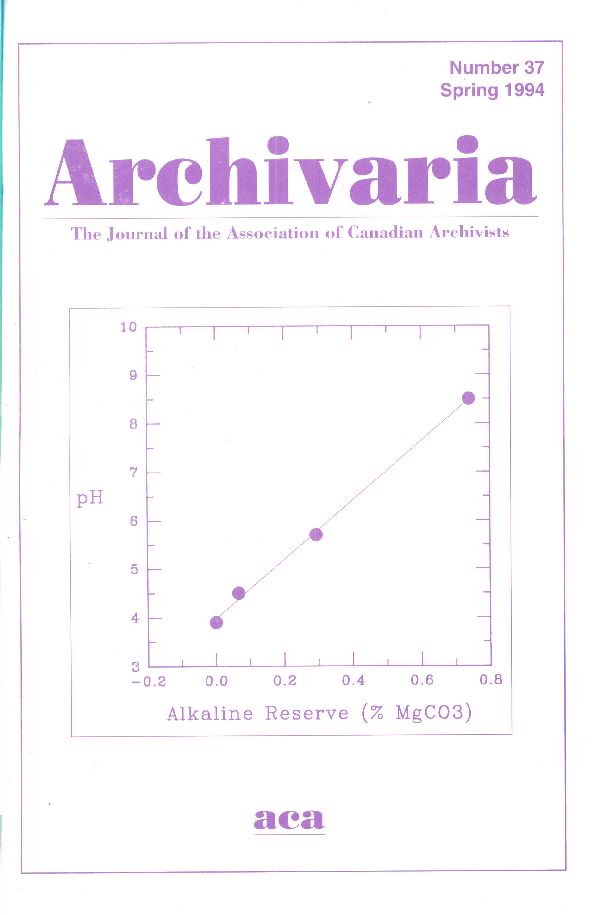Archival Theory and Practice: Between Two Paradigms
Abstract
Since 1987, when Hugh Taylor first alerted archivists to the paradigm shift taking place in the archival world, the nature and direction of that shift has become a little clearer. From our present perspective, archival methods seem to be moving toward a closer alignment with archival theory. The principle shaping the new paradigm is respect des fonds; practical adherence to the principle increasingly involves the analysis of the various contexts of documents' creation in order to better reveal their relation to one another. This analysis is being adopted for the purposes of appraisal and description and is of considerable significance to the archives-records management relationship. When coupled with accountability, the principle may also provide insights into archives as unique expressions of socio-historical value; and, in that way, assist archivists in determining what is essential to preserve. In the end, whether theory and method are closely aligned and actualized in practice will depend not on the power of the theory, but on the power of individuals, professional organizations, and institutions. Individually and collectively, archivists need to explore the substance of archival work and out of that exploration develop minimum standards of practice built on a foundation of shared principles and assumptions about the nature and value of archives.
RÉSUMÉ
Depuis 1987, lorsque Hugh Taylor alerta les archivistes qu'on assistait dans le monde archivistique à une réorientation paradigmatique, la nature et la direction de cette réorientation est devenue quelque peu plus claire. De notre perspective présente, les méthodes archivistiques semblent se réaligner d'une manière plus rapprochée de la théorie archivistique. Le principe qui donne forme à ce nouveau paradigme est celui du respect des fonds; l'adhésion effective à ce nouveau principe implique de plus en plus l'analyse des divers contextes de création des documents dans le but de mieux saisir leurs inter-relations. Cette analyse est adoptée pour des fins d'évaluation et de description et elle est d'une grande importance pour les rapports archives/gestion de documents lorsqu'associée à la notion de responsabilité. Ce principe peut également fournir des éclaircissements sur les archives comme expressions privilégiées de valeur socio-historique et, ainsi, aider les archivistes à discerner ce qu'il est essentiel de préserver. En bout de ligne, que la théorie et les méthodes s'alignent dans les faits dépendra non pas tant sur les pouvoirs de la théorie mais plutôt sur celui des individus, des organisations professionnelles et des institutions. Individuellement ou collectivement, les archivistes doivent explorer la substance du travail archivistique et de ce travail exploratoire, développer un minimum de critères de pratique basés sur un ensemble d'hypothèses et de principes communs quant à la nature et à la valeur des archives.
Authors of manuscripts accepted for publication retain copyright in their work. They are required to sign the Agreement on Authors' Rights and Responsibilities that permits Archivaria to publish and disseminate the work in print and electronically. In the same agreement, authors are required to confirm that "the material submitted for publication in Archivaria, both in its paper and electronic versions, including reproductions of other works (e.g. photographs, maps, etc.) does not infringe upon any existing copyright." Authors of manuscripts accepted for publication retain copyright in their work and are able to publish their articles in institutional repositories or elsewhere as long as the piece is posted after its original appearance on archivaria.ca. Any reproduction within one year following the date of this agreement requires the permission of the General Editor.





